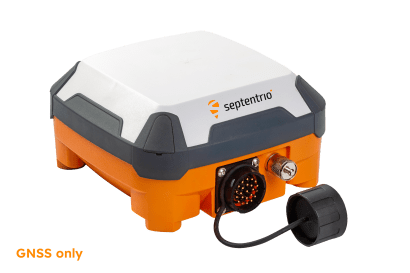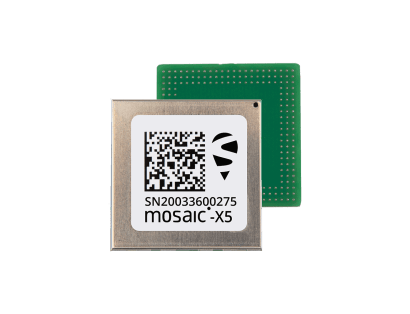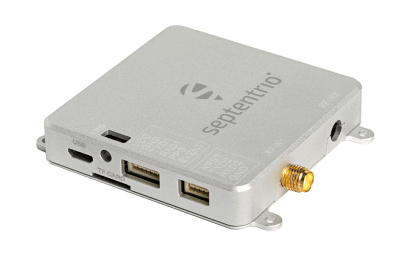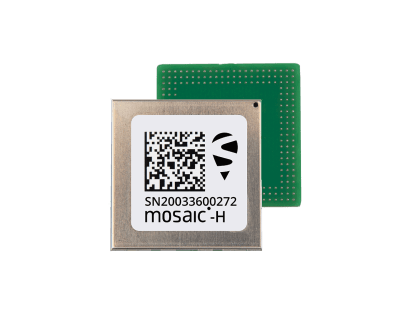GPS/GNSS接收机
了解我们的GNSS和GNSS/INS接收机解决方案
另请查看我们的GNSS天线查找器。
过滤选项
Type
More info
GNSS receivers come in various types: modules for integration, evaluation & development receivers for testing, boards for OEM applications, rugged enclosures for harsh environments, GNSS/INS solutions for enhanced accuracy and GNSS denied environments, reference receivers for scientific and stationary use and also smart antenna receivers for easy integration.
- Module receiver: Module receivers are designed for mass volume production and for applications where (SWaP) Size Weight And Power matters.
- Evaluation & Development receiver: Designed for evaluation testing and development purposes. They are designed for evaluation and testing only not for long time use in harsh environments.
- Board receiver: Board receivers offer a balance between integration flexibility, functionality, and time to market typically used in OEM applications where customization and integration into larger systems are required.
- Housed (ruggedized) receiver: A housed (rugged) receiver provides a certified protection against environmental factors such as water, dust, and shock, making them suitable for outdoor and harsh environments.
- INS solution: Inertial Navigation System (INS) solutions combine GNSS receiver data with inertial measurement unit (IMU) data to provide accurate position, velocity, and 3D attitude information, even in environments where GNSS signals may be obstructed or unavailable.
- Reference receiver: Reference receivers are used as stationary reference points in GNSS network systems, providing precise and stable position information for scientific us or for correction networks.
- Smart antenna: These compact antennas integrate a GNSS receiver into an antenna housing, offering improved signal reception and simplified installation but also less cabling and connectors which are otherwise exposed to harsh environmental conditions.
GNSS tracking
More info
GNSS tracking is the process of determining and monitoring the real-time location and movement of an object or person using signals from Global Navigation Satellite Systems (GNSS) such as GPS, Galileo, QZSS, BeiDou, NavIC or GLONASS constellations to calculate precise positions.
GNSS receivers that have access to the highest number of constellations and signals offer the best positioning availability, accuracy and resilience even in challenging environments. Learn more: Why MF & MC matters for GPS/GNSS receivers?
The precision of GNSS tracking can be enhanced with correction services like Real-Time Kinematic (RTK) positioning, PPP (Precise Point Positioning) and PPP-RTK also known as SSR. Learn more: GNSS corrections demystified or watch this webinar on demand. Discover also our Agnostic GNSS corrections program.
Technology
More info
GNSS and GPS receivers technology:
• Heading support: A GNSS receiver with heading support can determine the direction (or angle) an object is facing. This is often achieved by using two GNSS antennas to compare the signals and calculate the heading.
• Base support: A GNSS receiver with base support can act as a "base station." It stays in a fixed position and provides correction data to other GNSS receivers (rovers) in the area to improve their accuracy.
• Corrections enabled: A corrections-enabled GNSS receiver can receive correction data (like from a base station or a network) to improve its positioning accuracy, often achieving centimeter-level precision.
• GNSS/INS: This type of GNSS receiver is integrated with an Inertial Navigation System (INS). The INS uses sensors (like accelerometers and gyroscopes) to help maintain accurate positioning even when satellite signals are weak or temporarily unavailable.
• Rover & base support: A GNSS receiver with rover and base support can operate in both modes: as a rover (moving unit that uses corrections) or as a base station (providing corrections to other rovers).
• Rover support: A rover-support GNSS receiver is designed to be a mobile unit that receives correction data from a base station to achieve high-precision positioning.
• Timing support: A GNSS receiver with timing support is used primarily to provide very accurate time synchronization for applications like telecommunications or power grids, rather than focusing on position accuracy.
Position update rate
IP Rating
Powering the receiver




